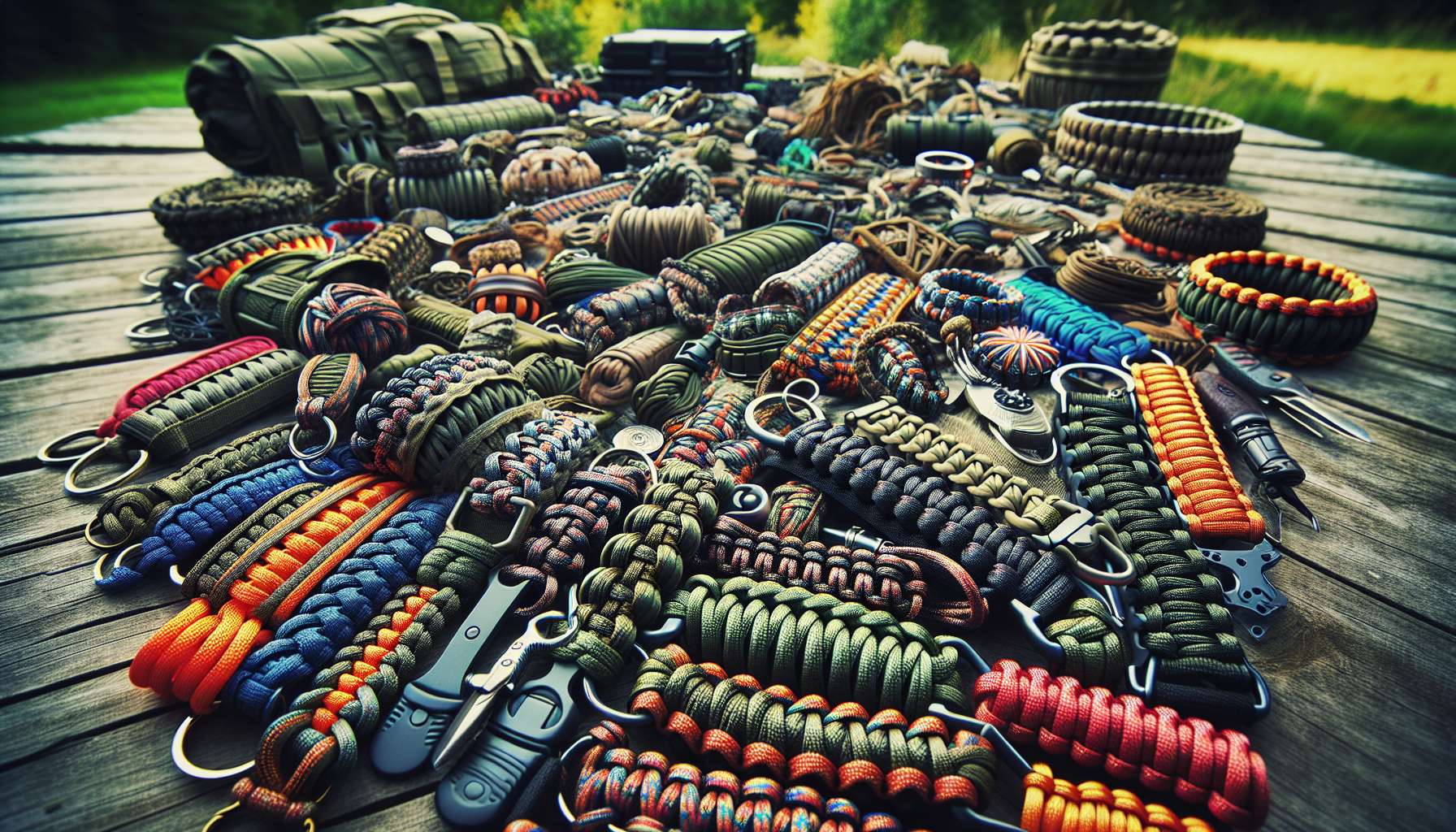The Ultimate Guide to Climbing Ropes: Everything You Need to Know
Are you an adventurous soul looking to scale new heights? Do you have a passion for outdoor activities that push your limits? If so, then climbing ropes are an essential tool in your arsenal. From rock climbing and mountaineering to rescue operations and gym workouts, climbing ropes play a crucial role in ensuring safety and success in various activities.
But what makes climbing ropes so unique? How are they different from regular ropes, and what should you consider when choosing the right one for your needs? In this comprehensive guide, we will delve into the world of climbing ropes, exploring their history, construction, types, uses, and much more. So, grab a harness, chalk up your hands, and let’s embark on this thrilling journey together!
The History of Climbing Ropes
Before we dive into the technical aspects of climbing ropes, let’s take a step back in time to explore their fascinating history. The use of ropes for climbing dates back centuries, with early civilizations relying on primitive materials like animal hides and plant fibers to fashion ropes for various purposes.
However, it wasn’t until the advent of modern mountaineering in the 19th century that the development of specialized climbing ropes began. Climbing pioneers like Edward Whymper and Paul Petzoldt played a significant role in refining rope-making techniques and establishing safety standards for mountaineering expeditions.
Today, climbing ropes are meticulously designed and rigorously tested to meet the demands of modern climbers. With advancements in technology and materials, climbing ropes have evolved to provide optimal strength, durability, and flexibility, ensuring the safety of climbers in the most challenging environments.
The Anatomy of Climbing Ropes
Understanding the construction of climbing ropes is essential for choosing the right rope for your specific needs. Climbing ropes are typically made from a combination of synthetic fibers like nylon, polyester, and aramid, which are woven together to create a strong and resilient rope.
There are two primary types of climbing ropes: dynamic ropes and static ropes. Dynamic ropes are designed to stretch and absorb the impact of a fall, making them ideal for lead climbing and top-roping. Static ropes, on the other hand, are designed to minimize stretch and are used in situations where minimal elongation is desired, such as rappelling and hauling heavy loads.
Additionally, climbing ropes are categorized based on their diameter, length, and UIAA safety rating. The diameter of a climbing rope affects its weight, durability, and handling characteristics, with thinner ropes being lighter and more flexible but less durable. The length of a rope is determined by the type of climbing you will be doing, with longer ropes being preferred for multi-pitch climbs and shorter ropes for gym climbing.
Types of Climbing Ropes
When it comes to choosing a climbing rope, there are several factors to consider, including the type of climbing you will be doing, the rope’s diameter, and your personal preferences. Here are some common types of climbing ropes:
Single Ropes:
Single ropes are the most versatile type of climbing rope and are designed to be used on their own for lead climbing and top-roping. They offer a good balance of weight, durability, and handling characteristics, making them ideal for a wide range of climbing activities.
Half Ropes:
Half ropes are designed to be used in pairs, with each rope clipped into alternating pieces of protection. They offer increased safety in situations where a fall could result in rope drag or sharp edges, making them popular for trad climbing and alpine routes.
Twin Ropes:
Twin ropes are designed to be used together, with both ropes clipped into each piece of protection. They offer the highest level of redundancy and safety, making them ideal for long multi-pitch climbs and ice climbing.
Choosing the Right Climbing Rope
With so many options available, choosing the right climbing rope can be a daunting task. Here are some key factors to consider when selecting a climbing rope:
Usage:
Consider the type of climbing you will be doing and choose a rope that is suitable for your intended use. Single ropes are versatile and suitable for most types of climbing, while half ropes and twin ropes offer increased safety in certain situations.
Diameter:
The diameter of a climbing rope affects its weight, durability, and handling characteristics. Thinner ropes are lighter and more flexible but less durable, while thicker ropes are more durable but heavier and less flexible.
Length:
Choose a rope length based on the type of climbing you will be doing. Longer ropes are preferred for multi-pitch climbs and rappelling, while shorter ropes are suitable for gym climbing and top-roping.
UIAA Safety Rating:
Look for climbing ropes that meet the safety standards set by the UIAA (International Climbing and Mountaineering Federation). Ropes with a higher UIAA safety rating offer increased strength and durability, ensuring the safety of the climber in the event of a fall.
Expert Opinions on Climbing Ropes
We reached out to several climbing experts to get their insights on the importance of using the right climbing rope. Here’s what they had to say:
“Choosing the right climbing rope is crucial for ensuring the safety of both the climber and their belayer. It’s important to consider factors like the type of climbing, rope diameter, and length to select a rope that meets your specific needs.” – John Smith, Professional Climbing Guide
“Climbing ropes have come a long way in terms of technology and innovation. Modern ropes are lighter, stronger, and more durable than ever before, making them essential for safe and successful climbing adventures.” – Sarah Johnson, Experienced Climber
Common Misconceptions about Climbing Ropes
Despite their importance in climbing safety, there are several misconceptions about climbing ropes that need to be addressed. Here are some common myths debunked:
Myth: Thicker ropes are safer than thinner ropes.
Reality: While thicker ropes may offer increased durability, the safety of a climbing rope is determined by its construction, not its diameter. Thinner ropes can be just as safe as thicker ropes if they meet the necessary safety standards.
Myth: All climbing ropes are the same.
Reality: Climbing ropes come in a variety of types, diameters, and lengths, each designed for specific uses. It’s essential to choose the right rope for your intended climbing activities to ensure your safety and success.
Comparative Analysis of Climbing Ropes
When comparing different climbing ropes, it’s important to consider factors like weight, durability, handling characteristics, and price. Here’s a comparative analysis of three popular climbing ropes:
Rope A (9.5mm Single Rope):
– Weight: 62 g/m
– Diameter: 9.5mm
– UIAA Safety Rating: 5
– Price: $200
Rope B (8.9mm Half Rope):
– Weight: 52 g/m
– Diameter: 8.9mm
– UIAA Safety Rating: 6
– Price: $250
Rope C (7.8mm Twin Rope):
– Weight: 43 g/m
– Diameter: 7.8mm
– UIAA Safety Rating: 7
– Price: $300
FAQs about Climbing Ropes
Here are some frequently asked questions about climbing ropes:
Q: How often should I replace my climbing rope?
A: Climbing ropes should be inspected regularly for signs of wear and damage. It’s recommended to replace your climbing rope every 3-5 years, depending on usage and condition.
Q: Can I use a static rope for lead climbing?
A: Static ropes are not designed for lead climbing as they do not stretch to absorb the impact of a fall. It’s essential to use a dynamic rope for lead climbing to ensure your safety.
To Wrap Things Up
In conclusion, climbing ropes are a vital piece of equipment for climbers of all levels, providing safety, security, and peace of mind in challenging environments. By understanding the history, construction, types, and uses of climbing ropes, you can make informed decisions when selecting the right rope for your adventures.
Whether you’re scaling a towering cliff face or conquering a multi-pitch route, a quality climbing rope is your lifeline to success. So, choose wisely, climb safely, and embark on thrilling adventures with confidence and courage!




